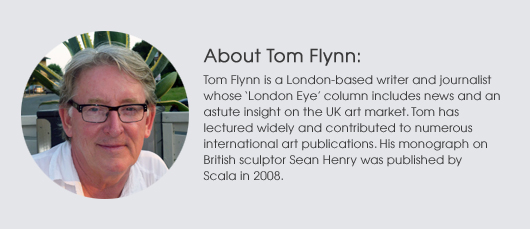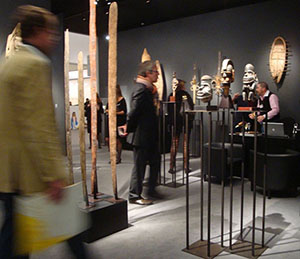
London has once again emerged, blinking, from the annual Frieze contemporary art fair that sweeps the city every October. This year, the usual disorientating dollop of up-to-the-minute contemporary art was tempered by the inaugural Frieze Masters event at the other end of Regents Park, where fairgoers feasted on classic modern works of art mixed with more ancient objects. Most of the punters we polled chose to visit just the contemporary fair, suggesting that the price of the joint ticket was beyond many recession-strapped pockets.
The trade seemed to approve of the new Frieze Masters, however, London Modern British dealers Osborne Samuel enjoying a positive reception for their Henry Moore solo show. Peter Osborne told London Eye it had been “an extremely good fair and long overdue. It put Frieze into context and all round did what we hoped it would. It was very well received; we sold five things including the most expensive and we met loads of really good new collectors from all over, many of whom had come for Frieze and found Frieze Masters afterwards. We’d do it again without hesitation.”
Similar feedback came from Paris-based Galerie Meyer, dealers in Oceanic art. Anthony Meyer told London Eye it was “a wonderful event, extremely well-organized with, of course, a few inconsequential growing pains which will be ironed out in the future.” Meyer concluded it was “worthwhile both in immediate sales and meeting the right people,” describing the clientele as “a very interesting, eclectic crowd, many of whom had never really seen high quality tribal art on display for sale in the UK because of the departure of the tribal auctions to Paris and New York.”
As for whether Frieze Masters could challenge The European Fine Art Fair (TEFAF), which takes place in Maastricht in the Netherlands every March, Anthony Meyer thinks not. “I will definitely do Frieze Masters again,” he said, “but it will not, and cannot, replace TEFAF.”
Ancient and modern is a developing theme in London at present. This week we were treated to an early preview of a fascinating loan exhibition which will take place at the British Antique Dealers’ Association (BADA) Fair in London early next year (March 13 to 19). The exhibition will feature a selection of watercolors by the influential painter and “topographer of the picturesque” William Payne (1760-1830). Curated by Payne expert and BADA Fair exhibitor John Spink, the show contrasts watercolor landscapes executed by Payne in the 18th century with the same scenes photographed today. The view across the Plym estuary to Saltram Park near Plymouth seems barely to have changed at all since Payne executed his View of Saltram Park from near Crab Tree,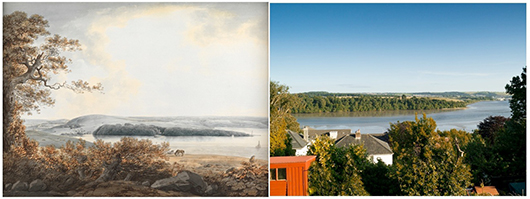

One person who will doubtless be hoping that her own paintings are still being enjoyed 200 years from now is Morag Donkin, a talented final year student at Edinburgh College of Art, whose Redhall House 1, an atmospheric oil and ink painting of a disused children’s home in Scotland, has just won the new Fleming-Wyfold Award.
It is often remarked that England had no school of home-grown painters during the 17th century, having to rely on the imported talents of the likes of Rubens and van Dyck for its visual culture. A new exhibition at the Courtauld Gallery places the German-born, Dutch-trained Peter Lely back among the greats of the Stuart painters, revealing him as an artist of true poetry and sensuality.
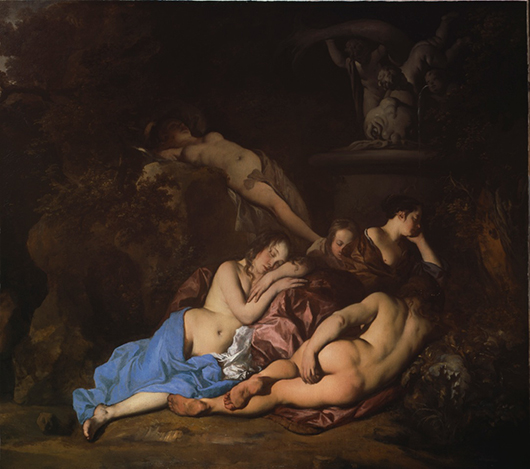

As Lely’s show makes clear, the Old Masters were able to justify their liberal portrayal of naked flesh by framing their visions as mythological scenes. If the Peter Lely show at the Courtauld leaves your craving yet more disrobed cellulite, you might wander over to the Wallace Collection in Manchester Square where they are celebrating the recent restoration of the Allegory of Fruitfulness by the Flemish master Jacob Jordaens.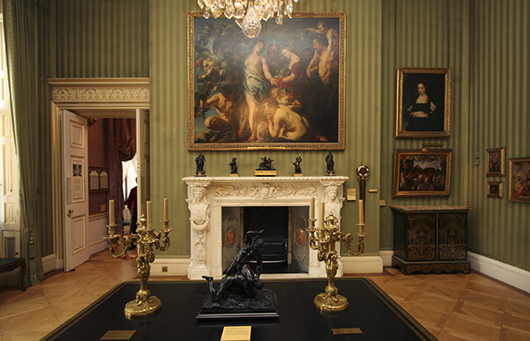
The Jordaens restoration also happens to be a good news story for the art market, for the conservation was made possible thanks to a generous donation of £40,000 from the Masterpiece Fair. The fair organized a charity gala dinner, inviting illustrious patrons and prominent museum curators with the aim of raising funds for one of London’s most treasured museums. Philip Hewat-Jaboor, chairman of Masterpiece, said, “We are delighted that Masterpiece London has been able to contribute to the conservation of this stunning and important work,” the unveiling of which serendipitously coincided with Harvest Festival Week earlier this month.
And so to a contemporary theme. There is still time to catch the exhibition of typically innovative new paintings by Bruce McLean (born 1944) at the Bernard Jacobson Gallery in London’s Cork Street (until Nov. 3). The show, titled “The Shapes of Sculpture,” demonstrates McLean’s tireless exploration of what sculpture means today.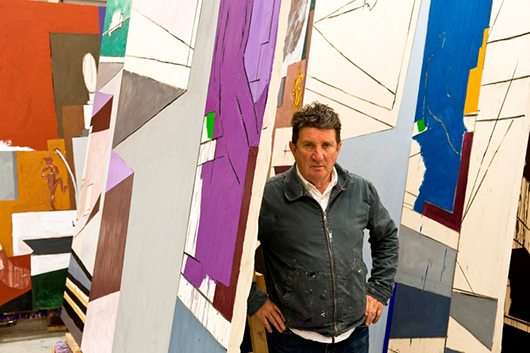
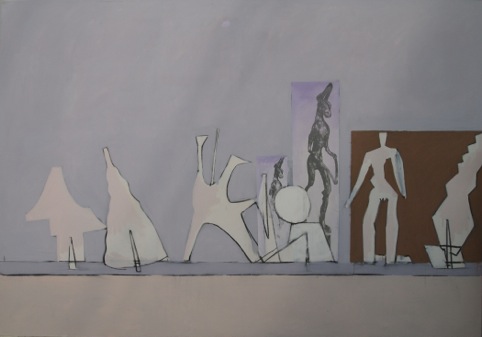
Given the brouhaha about public sculpture recently reignited by the installation of Damien Hirst’s monumental bronze écorché figure of a pregnant woman in the sleepy little north Devon seaside town of Ilfracombe, McLean’s show promises a welcome and thoughtful meditation on a perennially controversial topic.
As we indicated in an earlier London Eye, London’s famous Cork Street remains an endangered focal point of the art trade, despite its long and noble history. Watch this space for more news on whether it will survive the recent decision to evict the galleries to make way for radical commercial property development.
